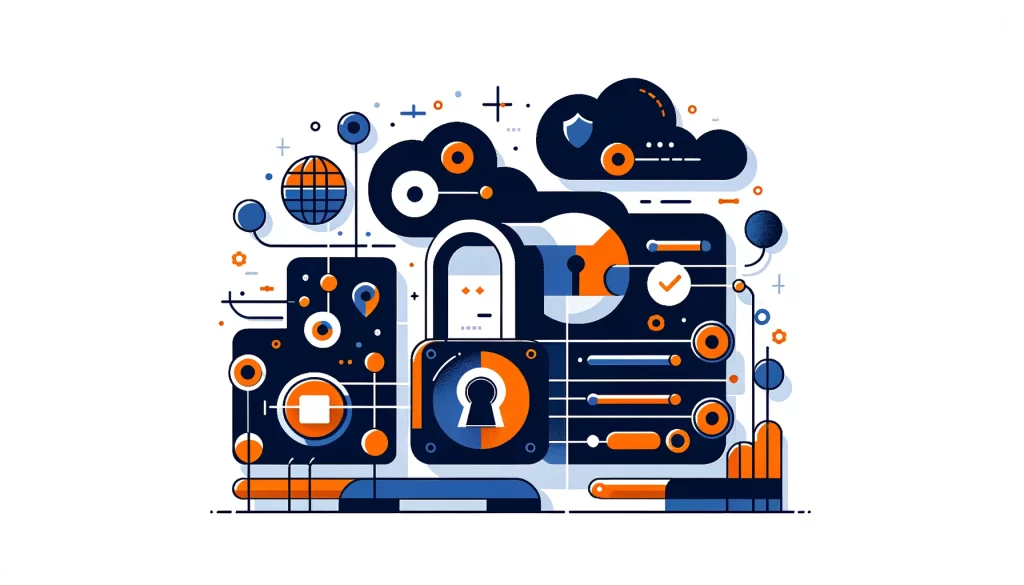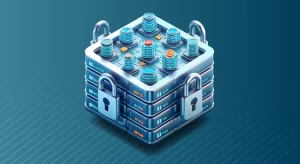
PoLP: Principle of Least Privilege

Nowadays, data is valuable more than ever, but also more vulnerable. Breaches, leaks, and cyber attacks plague organizations of all sizes. Amidst this backdrop, the principle of least privilege (PoLP) has emerged as a critical tenet of data security.
PoLP means that users, programs, or processes should only have the minimum privileges needed to do their job. A simple concept, but one with profound implications for protecting sensitive information.
This article will dive deep into the principle of least privilege. We’ll explore what it is, why it matters, and how to put it into practice. By the end, you will understand the power of PoLP and be ready to use it in your own organization.
Understanding the Principle of Least Privilege
The principle of least privilege is about only giving the permissions needed for a user or system to do their job.
Here’s an analogy to make it concrete: Imagine you’re hosting a party. You wouldn’t give every guest a master key to your entire house. That’s just asking for trouble.
Instead, you’d give them access only to the spaces they need – the living room, kitchen, and bathroom. The principle of least privilege works the same way, but with data.
When each user and component only has the permissions essential to their function, you create a more secure environment. You limit the potential damage from breaches, bugs, or malicious insiders. You make it harder for attackers to move laterally through your network.
PoLP is a core concept in cybersecurity. A foundational best practice recommended by NIST, CIS, and other leading authorities. When consistently applied, it bolsters your overall security posture.
Why PoLP Matters
In a world where data breaches happen often, it’s crucial to follow the principle of least privilege. Implementing PoLP brings several key benefits:
Reduced Attack Surface: By limiting permissions, you give attackers fewer openings to exploit. They have a harder time escalating privileges and accessing sensitive data.
Damage Control: Even if a breach occurs, PoLP minimizes the fallout. An attacker can only compromise what the breached account can access. The blast radius is contained.
Simplified Auditing: Fewer over-privileged accounts means fewer anomalies to investigate. Audits and forensic analyses become more efficient.
Compliance Alignment: Many regulations, like HIPAA and PCI-DSS, mandate least privilege access. Following PoLP helps meet these requirements.
Faster Provisioning: With a streamlined privilege model, onboarding new users and deploying new applications becomes quicker. You need to configure fewer complex permissions.
At its core, PoLP is about risk reduction. It’s about proactively limiting the potential for things to go wrong. By adhering to the principle of least privilege, you make your systems fundamentally more resilient and secure.
Examples of PoLP in Action
To make the principle of least privilege more tangible, let’s walk through a few real-world examples.
Example 1: Database Access Control
Consider a financial application backed by a database. The app needs to read and write data, but it doesn’t need to modify the database schema. Following PoLP, the app’s database account should have only SELECT, INSERT, UPDATE, and DELETE privileges. It wouldn’t have permissions like ALTER or DROP.
Example 2: Temporary Privilege Elevation
An engineer needs to perform a maintenance task requiring admin rights. The system uses temporary privilege elevation instead of permanently granting admin status. The engineer’s rights increase only for a limited time window, then automatically revert. This follows the spirit of PoLP by not leaving unnecessary standing privileges.
Example 3: Granular File Permissions
A company has a shared drive with folders for each department. PoLP dictates that HR employees can access the HR folder, but not folders for Finance or Legal. Within the HR folder, employee review documents are only accessible to a subset of senior HR staff. We allocate permissions granularly based on need.
These examples show how to apply the principle of least privilege across a range of scenarios. Whether it’s a database, a server, or a file share, PoLP provides a guiding framework for secure access control.
Implementing PoLP: Best Practices
Putting the principle of least privilege into practice requires planning and ongoing effort. Here are some best practices to keep in mind:
Assess Current Privileges: Start by understanding your current state. Inventory existing user and system privileges. Identify where permissions may be over-allocated.
Define Least Privilege Policies: Document the minimum set of privileges required for each role and function. Use these policies as a guide for provisioning access.
Implement Granular Controls: Don’t rely solely on broad roles. Leverage attribute-based access control (ABAC) for more precise privilege management. Consider factors like time, location, and device while doing so.
Use Temporary Privileges: For special situations, use temporary privilege elevation instead of permanent rights. Automate the process of granting and revoking these short-term permissions.
Regularly Audit and Adjust: Privileges have a way of spreading over time. Conduct regular audits to find and prune excess rights. Continuously align the reality with the principle of least privilege.
Monitor Privilege Usage: Log and monitor the use of privileges. Watch for anomalies or potential abuses. This visibility is key for maintaining a least privilege posture.
Automate Where Possible: Managing privileges across a large organization is complex. Automation tools can help ensure consistent, timely application of PoLP at scale.
Educate and Train: PoLP requires buy-in from all users. Educate staff on why it matters and how to work within least privilege constraints and make it a part of your security culture.
Adopting the principle of least privilege is a journey. It requires a shift in mindset and ongoing vigilance. But the payoff – a dramatically reduced risk profile – is well worth the effort.
Overcoming PoLP Challenges
Implementing the principle of least privilege is not without its challenges. Some common hurdles include:
Legacy Systems: Developers may not have designed older applications with PoLP in mind. They may require broad privileges to function, making it harder to restrict rights.
Complexity: In large, intricate IT environments, mapping out the minimum necessary privileges can be daunting. The complexity can make it tempting to over-allocate permissions.
Users who are accustomed to broad privileges may resist when their rights are curtailed. They may see it as a hindrance to productivity.
Privilege Creep: Even with an initial least privilege implementation, permissions have a tendency to accumulate over time. Combating this privilege creep requires discipline.
These challenges are surmountable. Strategies to overcome them include:
Gradually rolling out PoLP, starting with the most sensitive systems and working outward.
Investing in tools to automate and simplify privilege management at scale.
Clearly communicating the rationale and benefits of PoLP to all stakeholders.
Establish a culture of least privilege by making tight permissions the norm and carefully controlling exceptions.
By anticipating and proactively addressing these hurdles, you can smooth the path to a successful PoLP implementation.
Tools for Implementing PoLP
Putting the principle of least privilege into practice across a complex organization is a significant undertaking. Fortunately, there are tools available to help streamline the process.
PAM solutions simplify the implementation of least privilege principles. They provide a centralized platform for managing and monitoring privileges across your entire IT ecosystem.
Key features to look for in a PAM tool include:
- Granular Permissions: The ability to define and enforce permissions at a highly granular level, aligning closely with PoLP.
- Automated Provisioning: Streamlined processes for provisioning and de-provisioning access based on roles and policies.
- Temporary Elevation: Capabilities for granting temporary privileges for specific tasks, with automatic revocation.
- Session Monitoring: Detailed logging and monitoring of privileged sessions for auditing and threat detection.
- Reporting and Analytics: Robust reporting to provide visibility into privilege allocation and usage patterns.
The Future of PoLP
As cybersecurity threats continue to evolve, the principle of least privilege will only become more important. Attackers are constantly developing new ways to infiltrate networks and escalate privileges. By following the Principle of Least Privilege (PoLP), you can protect yourself. This means reducing your vulnerability and minimizing the impact of any potential security breaches.
In the coming years, we can expect to see more sophisticated tools for implementing PoLP at scale. Machine learning and AI are likely to become increasingly important. They will help create and enhance privilege models based on real-life usage.
We may also see the principles of PoLP extended beyond traditional IT systems. As IoT and OT combine, limit access to prevent cyber attacks on more connected devices.
Organizations need to constantly review and improve the principle of least privilege. By weaving PoLP into the fabric of your security operations, you can build a more resilient, adaptive security posture.
Conclusion
The principle of least privilege is a powerful tool in the cybersecurity arsenal. By limiting permissions to the bare minimum, you can dramatically reduce your risk exposure. You contain the blast radius of potential incidents, making your systems inherently more secure.
But PoLP requires careful planning, consistent execution, and ongoing maintenance. It demands buy-in and effort from all levels of your organization.
The rewards, however, are well worth the investment. By operating under the principle of least privilege, you not only bolster your defenses, but also streamline your operations. You create a more efficient, more manageable security environment.
As you embark on your own PoLP journey, remember the key lessons:
- Start with a clear understanding of your current privilege allocations.
- Define granular, role-based permission policies aligned with business needs.
- Leverage automation to consistently enforce these policies at scale.
- Regularly audit and adjust privileges to combat permission creep.
- Foster a culture of least privilege, with buy-in from all stakeholders.
By putting these principles into practice, you can harness the full potential of PoLP. You can make a security plan that goes beyond tools and rules, becoming a core part of how you operate.
In a world where data is king and threats are ever-present, the principle of least privilege is a critical ally. Embrace it, implement it, and let it be your guide on the path to stronger, more resilient security.
DataSunrise helps you control data access for all your stores, like databases, data warehouses, and data lakes by enabling PoLP efficiently. Schedule a demo and explore DataSunrise now.
